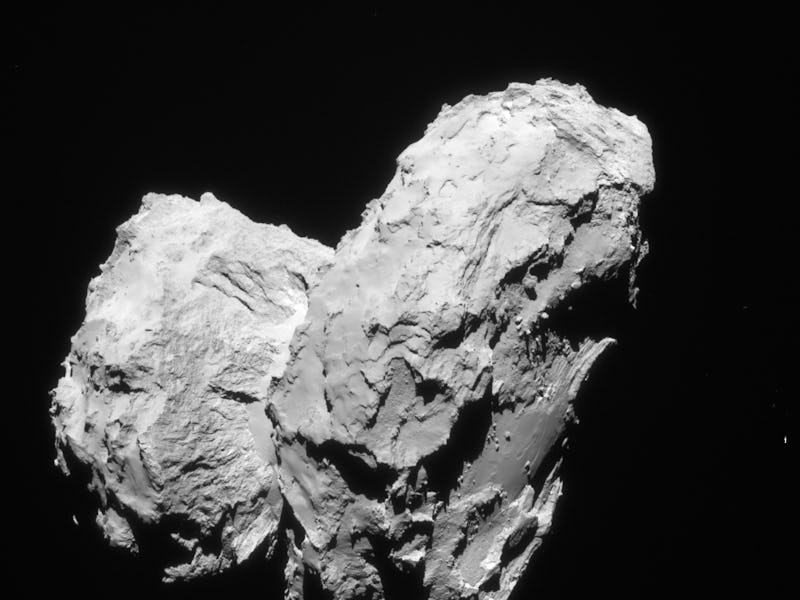The Rosetta Probe Just Discovered Oxygen on a Comet
And it’s the breathable kind. Sort of.

Water and ice aren’t the only thing sitting just below the surface of comets. On Wednesday, the European Space Agency announced that the Rosetta spacecraft, which has been studying Comet 67P/Churyumov–Gerasimenko for over a year now, just discovered a slew of different gases pouring out of the comet’s nucleus — including oxygen.
We’ve already known about water vapor bursting out from the giant ball of ice and rock, but this latest discovery showed prolific signs of carbon monoxide and carbon dioxide, as well as varying degrees of chemical species containing nitrogen, sulphur, and even noble gases like argon.
But the most compelling gas discovery is oxygen. The third most abundant element in the universe is actually very difficult to find outside of Earth, especially in its breathable O2 form.
O2 is highly reactive and can readily participate in many kinds of chemical reactions with other elements and compounds, such as hydrogen.
“We weren’t really expecting to detect O2 at the comet — and in such high abundance,” said Kathrin Altwegg, principal investigator of the Rosetta Orbiter Spectrometer for Ion and Neutral Analysis instrument, said in a statement. “Because it is so chemically reactive, so it was quite a surprise. It’s also unanticipated because there aren’t very many examples of the detection of interstellar O2. And thus, even though it must have been incorporated into the comet during its formation, this is not so easily explained by current solar system formation models.”
ESA scientists say the amount of oxygen Rosetta has found seems to be strongly linked to the amount of water present in the comet at any given moment — meaning the more water is present, the less O2 was observed, and vice versa. This suggests that the oxygen being found is perhaps derived from a photolytic or radiolytic breakdown of water on the surface of the comet.
The evidence for this explanation is shaky. “Instead,” said Andre Bieler, lead author of the Nature paper that details the findings, “it seems more likely that primordial O2 was somehow incorporated into the comet’s ices during its formation, and is being released with the water vapor today.”
Regardless of what turns out to be the case, this is just the latest in a string of amazing discoveries made possible by the Rosetta spacecraft. The probe will be making plenty more observations in the next month as Comet 67P continues to make its way around the sun.